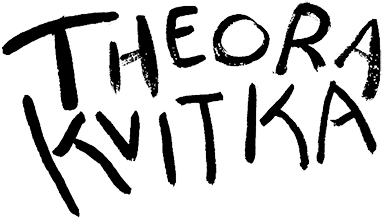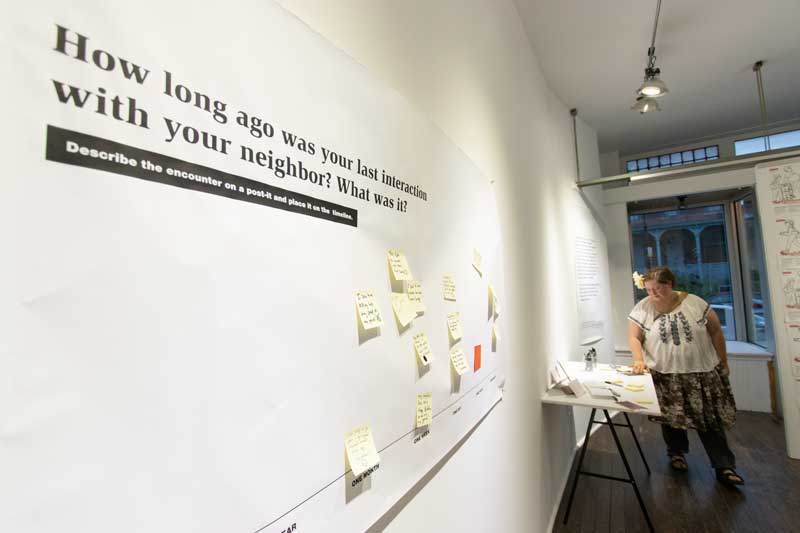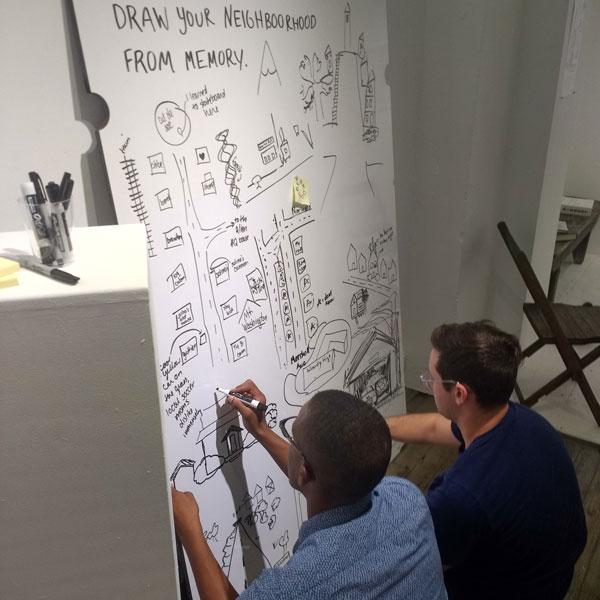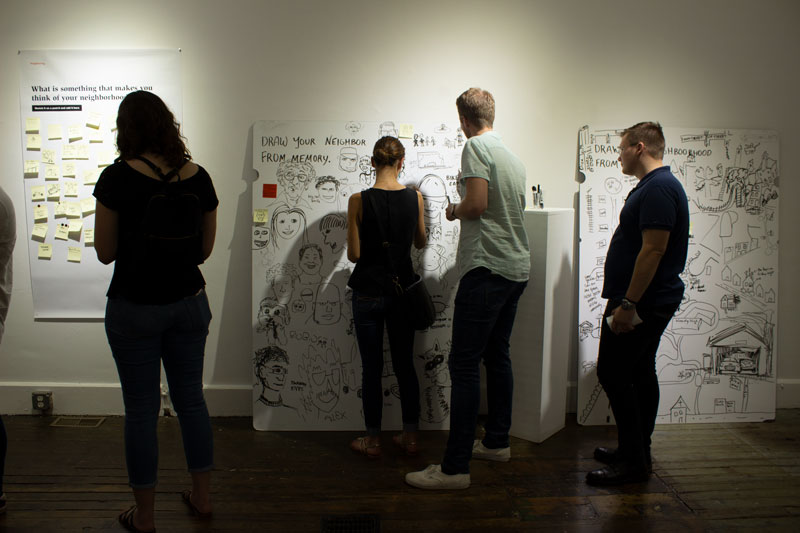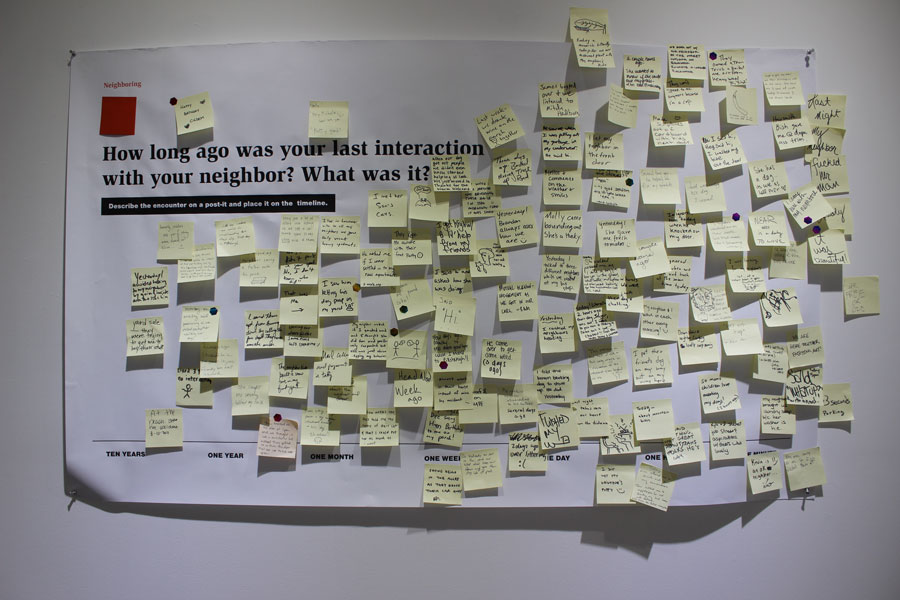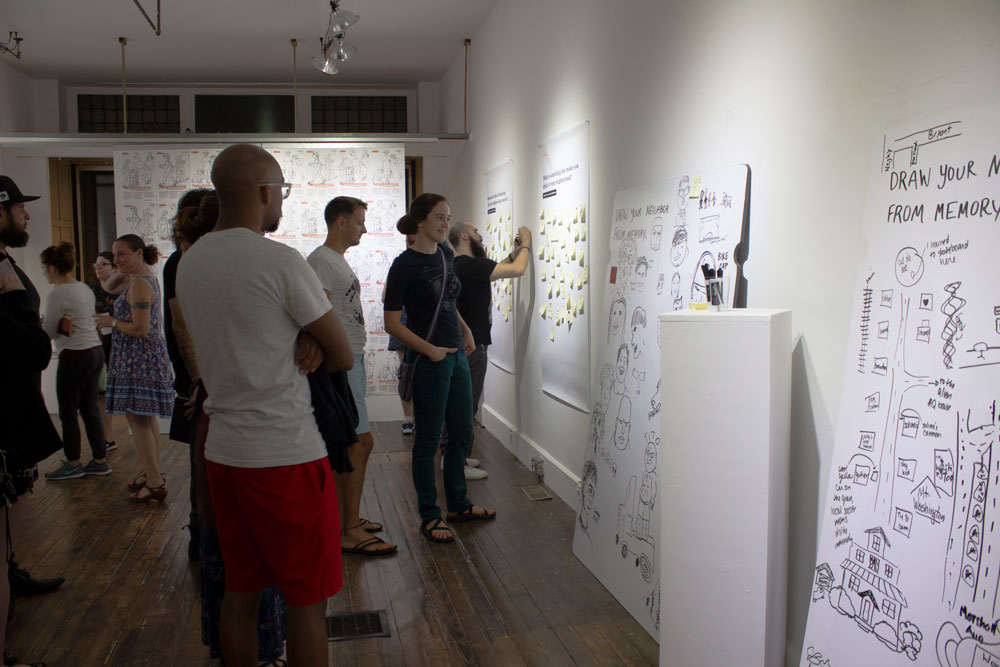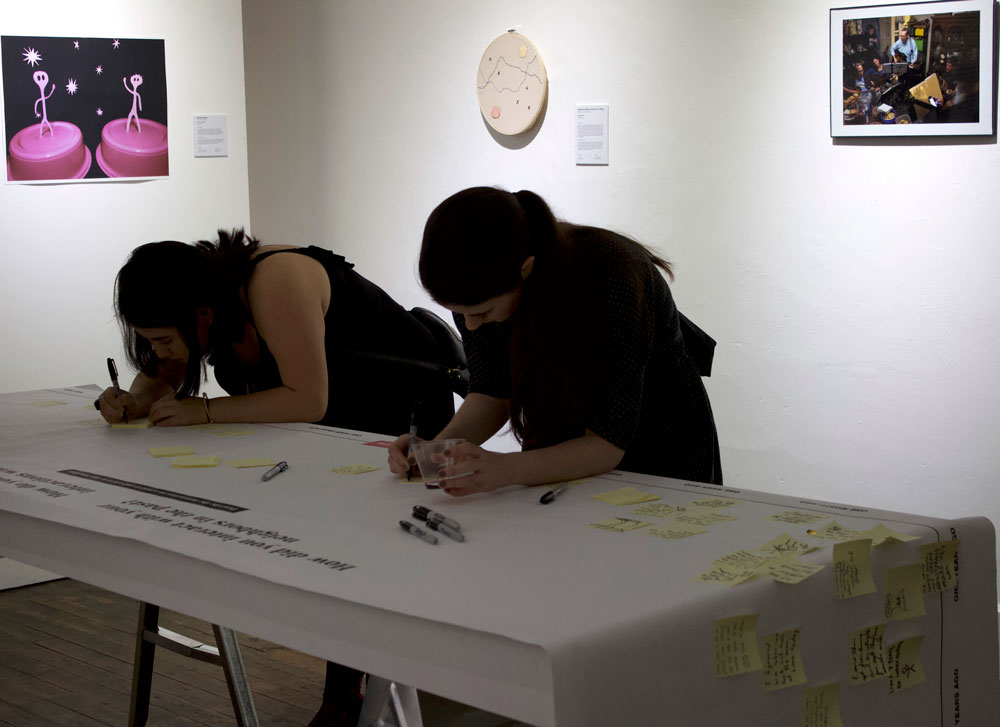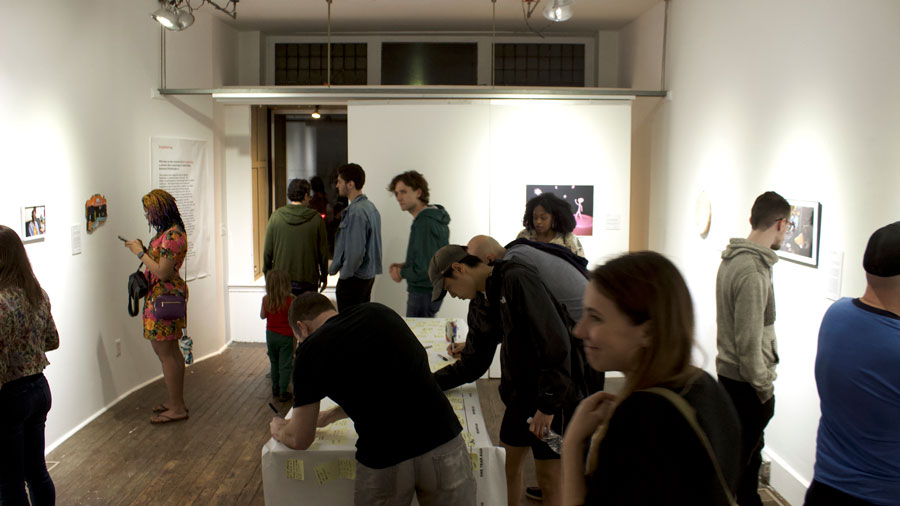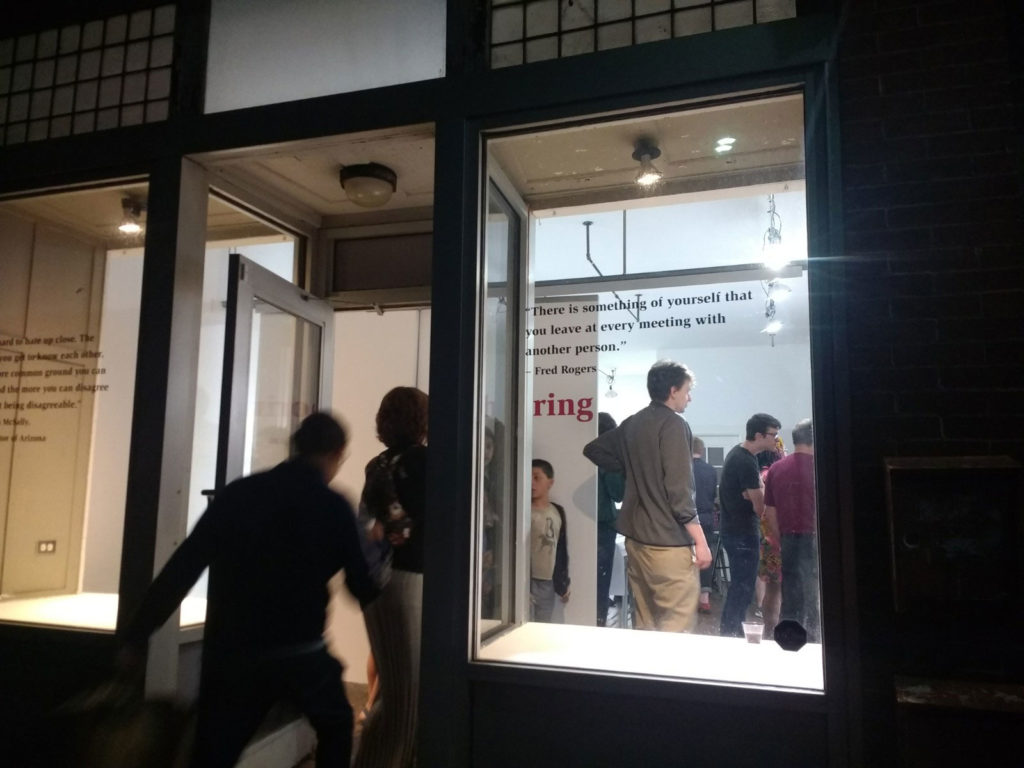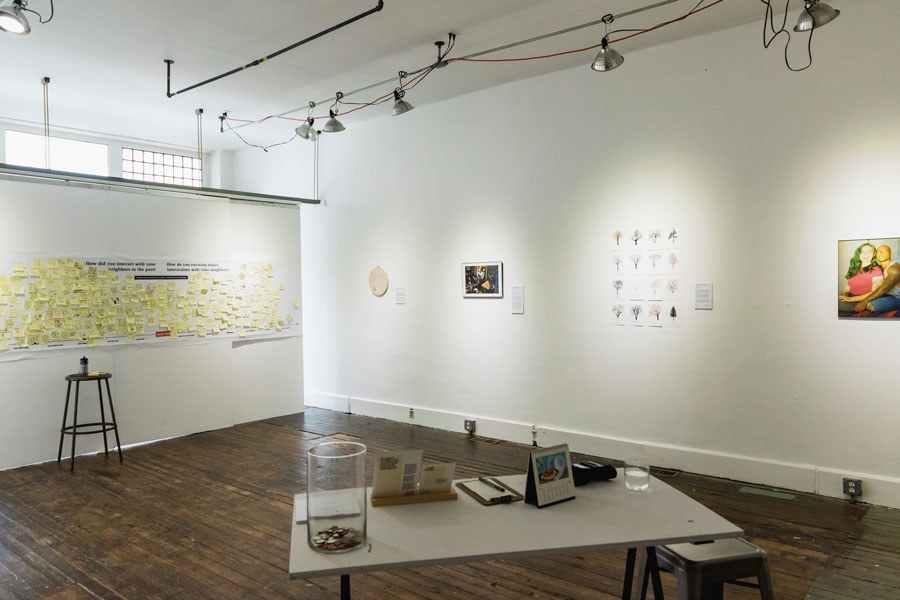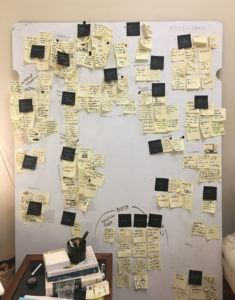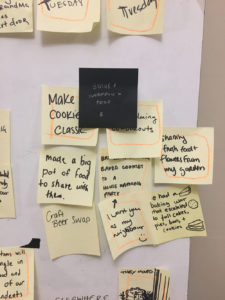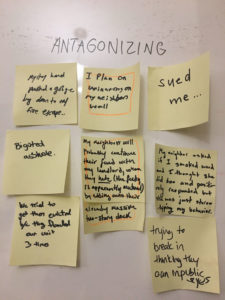
Problem space
Catherine Oldershaw and I are two transplants to Pittsburgh, PA (2015 and 2016, respectively). This city is known for being small and relatively friendly, but our efforts to get to know the people nearby were hit or miss. We wondered: How do you make a new city feel like home? What does it mean to live in a community? How were other Pittsburghers faring in their efforts, or were they even trying? What informal connections are thriving yet invisible to us?
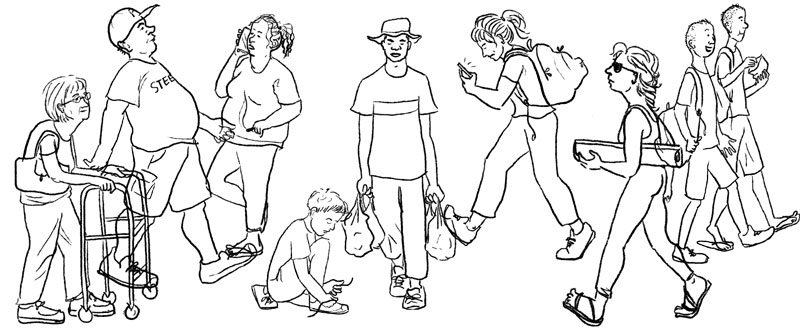
Simultaneously, we were watching the increasing social and political division in our country. We also were reading the work of Donella Meadows, a systems thinker. Meadows said, “The ability to self-organize is the strongest form of system resilience.” We wondered what would happen if we encouraged our neighbors to get to know their neighbors. Could we build small but sturdy links between people?
Context
Catherine Oldershaw and I are friends and alumnae of Carnegie Mellon University’s Interaction Design Master’s program, although we did not attend at the same time. Catherine is a design researcher and gallerist. From April 2017 to April 2020 she ran a storefront gallery, Late Space.
It’s worth noting that we started this project prior to the shooting at the Tree of Life Synagogue on October 27th, 2018, where a gunman killed 11 worshippers. After this heinous event, we felt the need for our project had become even more relevant, and hoped that our project could be an outlet for a city processing its grief. We will discuss this connection more at the end of this document.
Hypothesis
Design methods and art can encourage reflection and increase awareness of the value and consequence of living in a community.
Structure
To experiment on our hypothesis, we organized two interactive shows hosted in Late Space Gallery. The shows opened during “Unblurred”, Bloomfield/ Garfield neighborhood’s first Fridays art crawl. The gallery is located on Penn avenue, where the bulk of Unblurred events take place, resulting in well-attended event without a lot of marketing effort!
First Show
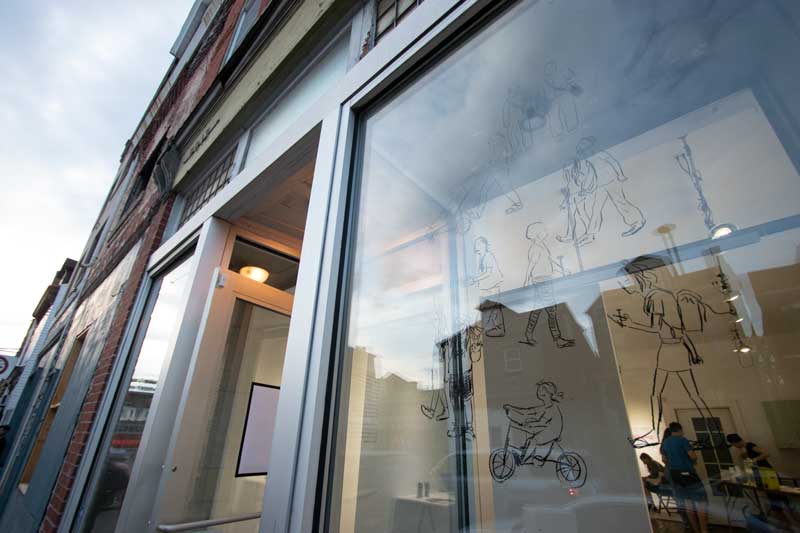
The first interactive gallery show was at Late Space on September 7th, 2018. Inside the space we hung giant posters and a couple of white boards which prompted visitors to reflect and write or draw:
- Draw your neighbor from memory (whiteboard)
- Draw your neighborhood from memory (whiteboard)
- How does the idea of interacting with your neighbor make you feel? (sticky notes)
- How long ago was your last interaction with your neighbor? What was it? (sticky notes and timeline)
- What is something that makes you think of your neighborhood? (sticky notes)
The first show was also a kick-off of our call for submissions. We invited Pittsburgh residents to:
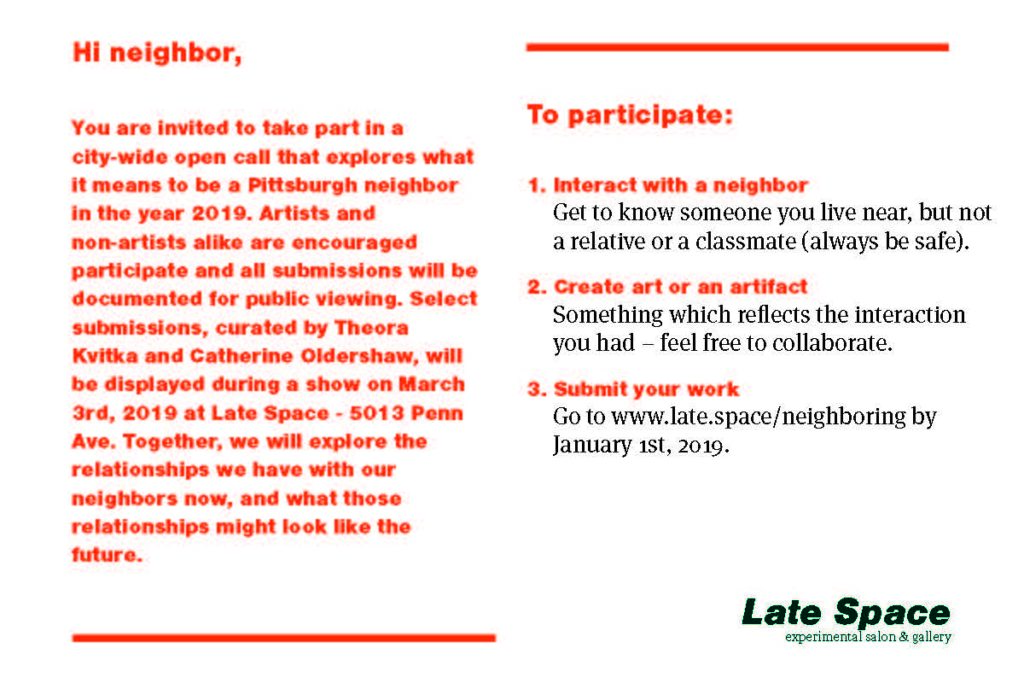
- Interact with a neighbor: Spend some time with someone you live near (but not a relative or a classmate). You could get to know the person who is always on your bus commute, the owner of a local business, someone you already say hi to but have never asked their name, or maybe learn something new about a neighbor you already know quite well.
- Create art or an artifact : Create something which reflects the interaction you had, in the medium of your choice. Your work can be abstract, representational, data-driven, or something else entirely: an artifact, sketch, photograph — anything that feels meaningful to you and the relationship you’ve formed with your neighbor. Feel free to collaborate with your neighbor on your submission.
- Submit to Late.Space: Go to latespace.co to submit a photograph and description of your piece by January 1st 2019. Jury-selected submissions will be exhibited at Late Space throughout the month of May.
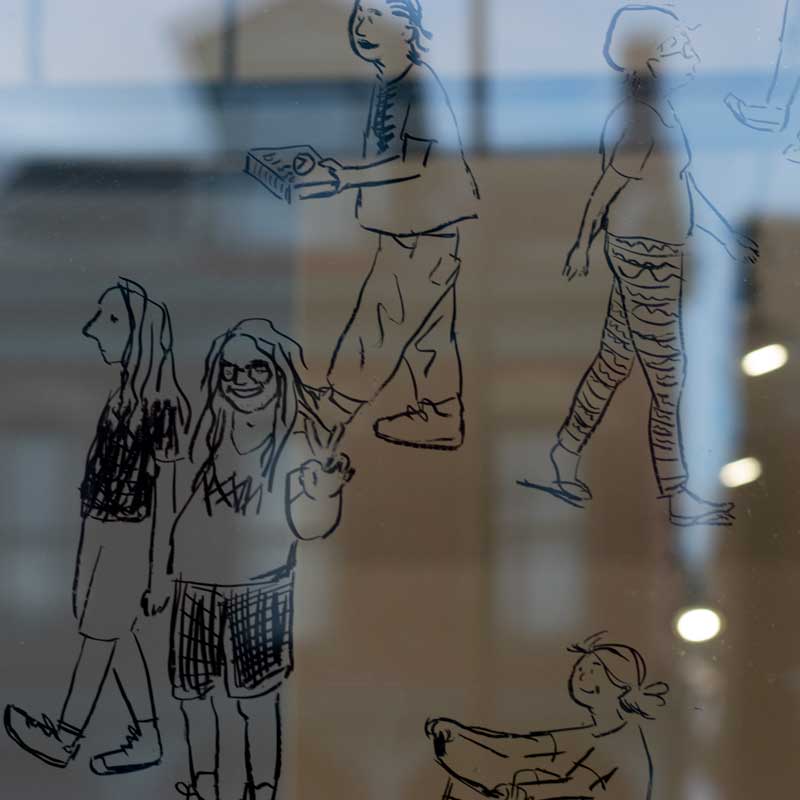
Second Show
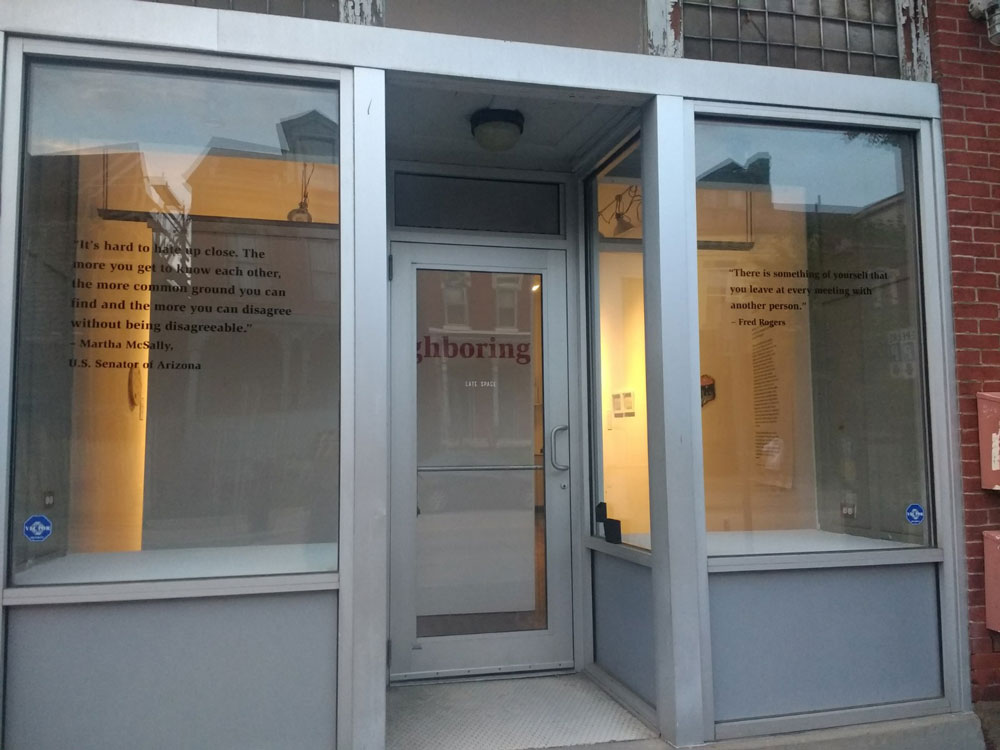
Nine months later, in May 2019, we opened the gallery doors for our final show. On display were 10 photographs, paintings and mixed-media works selected from the submissions we received. We also provided another opportunity for visitors to reflect. A large table displayed a timeline for people to add their most recent interactions with their neighbors, and explore those of others. The timeline extended into the future so that people could consider the role they play and the relationships they’d like to have in their community.
On the night of, we had some wonderful conversations with gallery goers, and were invited to write a guest post on BereaveMed!
Outcomes
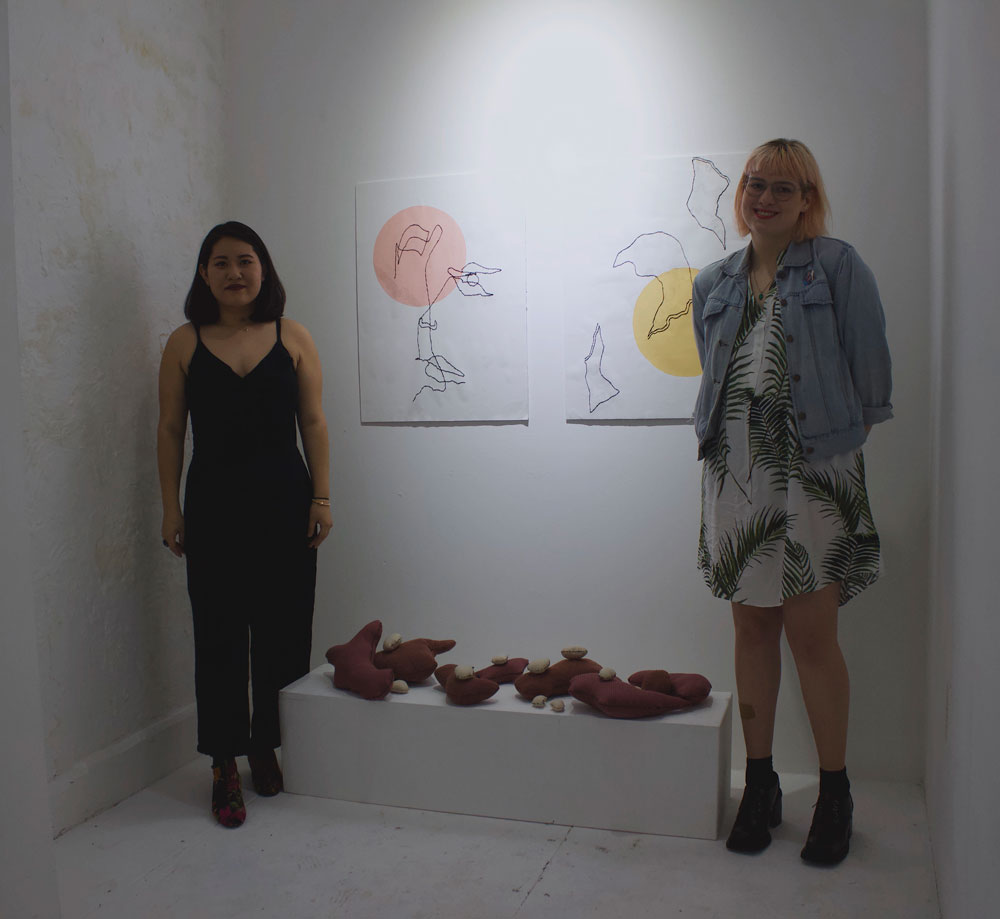
The artwork
When the time came to review submissions for the show, we were surprised that themes around the Tree of Life shooting did not appear. The 10 works we chose were incredibly thoughtful but largely positive. In addition to submitting the work, each contributor was asked to answer some questions to create a short artists’ statement.
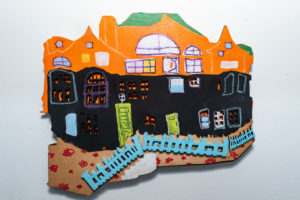
“The House that Grows” by Jameelah Platt and Josh Inklovich 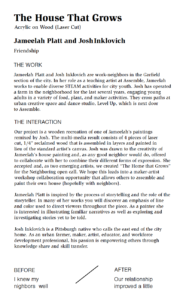
Wall text for “The House that Grows” by Jameelah Platt and Josh Inklovich 
“re: a postcard from the past (I) and (II)” by Grace Wong 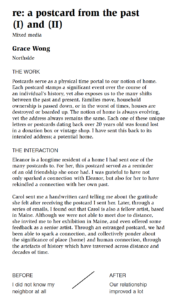
Wall text for “re: a postcard from the past (I) and (II)” by Grace Wong 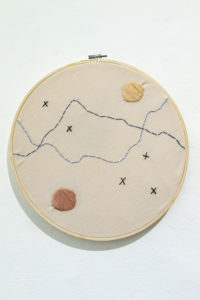
“platonic wake up texts at 3:48 am” by Marina Wei 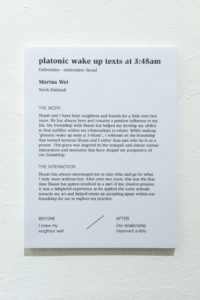
Wall text for “platonic wake up texts at 3:48 am” by Marina Wei 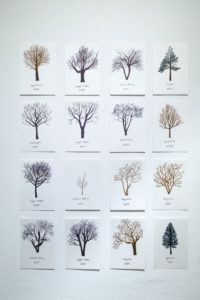
“Neighbors of Marchand” by Molly Berntsen 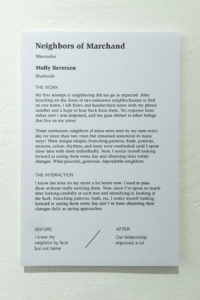
Wall text for “Neighbors of Marchand” by Molly Berntsen 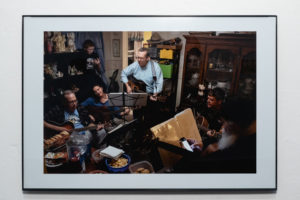
“Joe and the Acoustic Amateurs Anonymous” by Bettina Jones 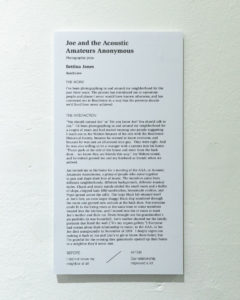
Wall text for “Joe and the Acoustic Amateurs Anonymous” by Bettina Jones 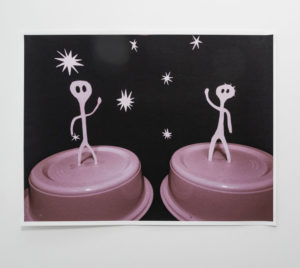
“United States” by Kevin DeLand 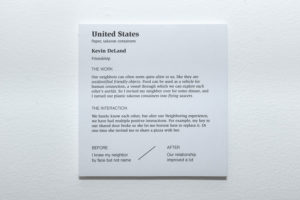
Wall label for Kevin DeLand 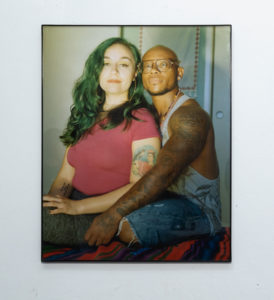
“Holding Zami” by J Houston 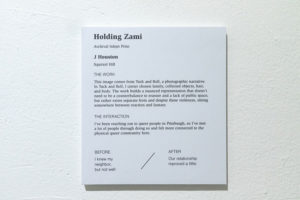
Wall text for “Holding Zami” by J Houston 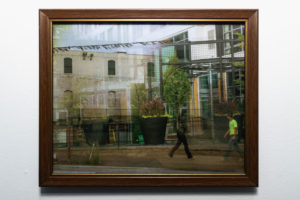
“Construction of Morrow Park Apartments 2015-17 (CLEARANCE excerpt)” by Aaron Regal 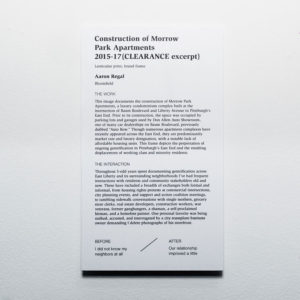
Wall text for “Construction of Morrow Park Apartments…” by Aaron Regal 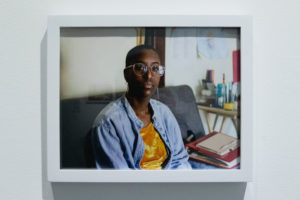
“An Artists Space” by Vania Evangelique 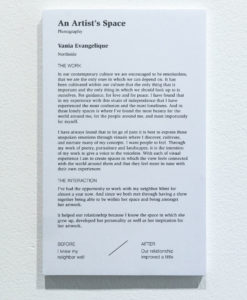
Wall label for “An Artists Space” by Vania Evangelique 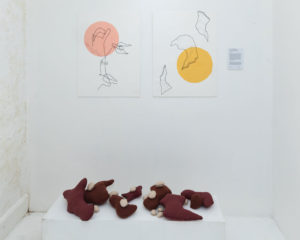
“ways of structuring” by Abigail Sutherland and Marina Wei 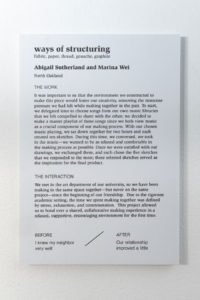
Wall text for “ways of structuring” by Abigail Sutherland and Marina Wei
Interactive ephemera
During both shows, Catherine and Theora were pleasantly surprised by how many people took the time to anonymously leave their thoughts in the gallery. Gallery visitors expressed a full range of emotions; we heard about neighbors helping each other, avoiding each other and resenting each other.

Reflections and conclusion
Our intention with this project, and especially the final exhibit, was not to gloss over the challenges that come with the reality of being a neighbor. In all promotional materials and writing, we used neutral language so as not to bias that interactions with neighbors must be cheery or positive. The year before the final show had revealed dangerous levels of hate and mistrust in our region with the Tree of Life shooting and the police killing of Antwon Rose. Neighborly relations are just a small component of the systematic “wicked problems” that gave rise to these tragedies. However, we hoped that by asking people to reflect on their interactions with their neighbors, we would make it clear that not interacting was just as much a choice as choosing to interact. Beyond just interacting with each other, we also need to look at the complex nature of neighborly relationships. We can judge them good or bad, weak or familial, dependent or isolated, but there is value and consequence in all of them.
Privately, Catherine and Theora were happy to see the documentation of so many positive interactions! We hope, in the long run, to encourage a supportive and respectful community. However, self-reflection must happen before change can take place, and self-reflection sometimes requires a little prompting and intervention. In Meadow’s words: “Before you charge in to make things better, pay attention to the value of what’s already there.”
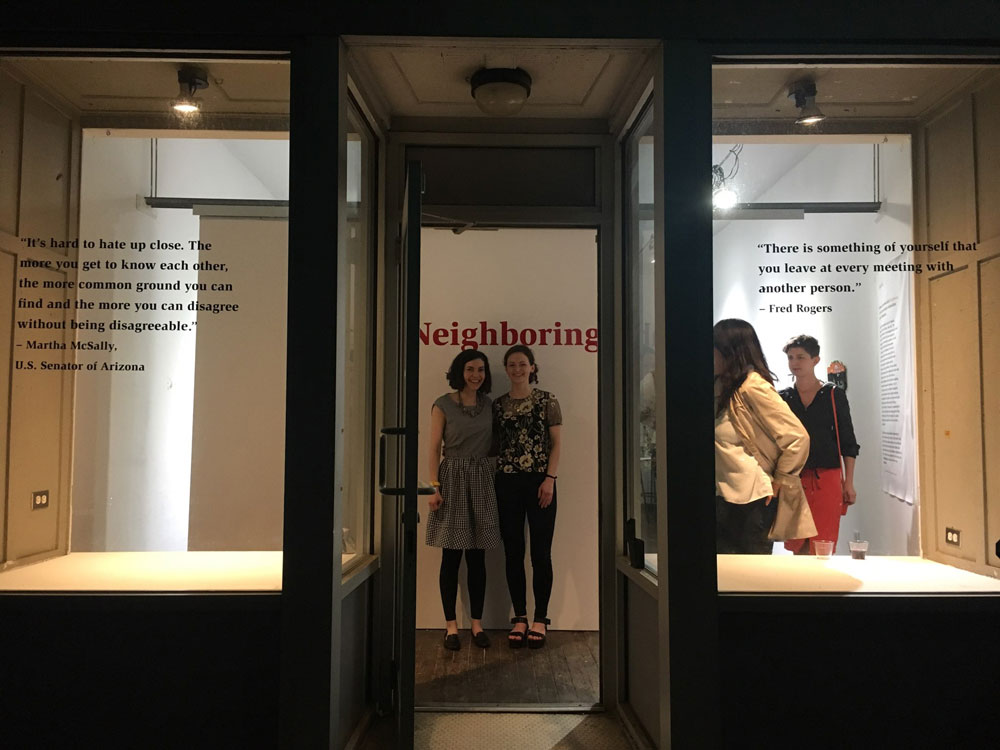
Catherine and Theora are designers by training, a discipline that cares about measuring outcomes. It’s impossible to measure the impact of this project, and perhaps that’s where it diverges from being solely a design / co-design project and enters the realm of art. We could have gone around with a clipboard and asked gallery goers how we’d changed their opinions but that would have felt strangely clinical and impersonal in a project that aimed to foster connection. All this to say, immeasurable as it is, the impact of Neighboring wasn’t negligible. We are confident that we touched at least a few people’s lives, including the artists, their neighbors, and of course, our own.
Next steps
We plan to continue the Neighboring project with a self-published book and tool-kit so that others can bring the project to their own city. We hope that future instances of Neighboring will inspire more conversations, artwork and awareness of the power of connection in communities.

